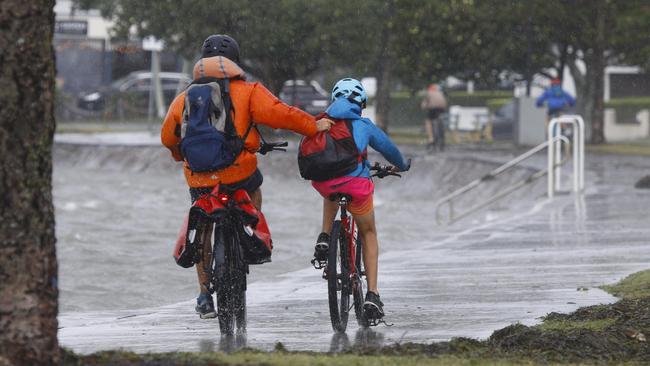Playing the long game on drought, flooding rains

The incidence of El Nino and La Nina climate conditions in the Pacific is a phenomenon widely known to Australians due to El Nino years being associated with droughts in eastern Australia, and La Nina being associated with cooler and wetter summers. Like all aspects of global climate variation, the details of measurement, modelling and prediction are complex, but the outcomes are imprinted on the nation’s collective memory and poetic heritage. Seasons of droughts such as the millennium drought (starting with a strong El Nino in 1997-2002) and seasons of flooding rains (such as the strong La Nina in 2010-11) are a part of our national psyche.
Headlines last week tell us the arrival of floods and wild weather on coastal and inland northern NSW and southern Queensland are associated with a La Nina event. For decades, the ability to predict this cycle has been a holy grail of science. Until this year the scientific consensus has been that El Nino and La Nina (ENSO) extremes are not predictable more than about six months ahead.
However, the arrival of La Nina this summer represents a breakthrough. Three years ago, Dr Bob Leamon and Dr Scott McIntosh, working for two US government institutions, decided to look at the science in a broader astronomical context. They discovered a link that allowed them to predict ENSO not months but years ahead. Their predictions were publicised at the 2017 annual American Geophysical Union Meeting; the most significant prediction was that late in 2020 we would see a return of La Nina conditions in the Pacific (eastern Australia). Now it has happened.
It is one of the mysteries of science that this prediction in 2017 did not awaken attention or at least controversy; in Australia, for example, we have significant scientific programs studying ENSO within universities, the Bureau of Meteorology and CSIRO, but two substantial reviews of Australian climate and ENSO in the past year failed to reference the existence of the Leamon-McIntosh prediction. This may be because the two US scientists incorporated solar as well as the more conventional ocean and atmospheric data in their analysis.
The 2020 AGU annual meeting concluded last week; Leamon and McIntosh, with two physicists from the UK’s University of Warwick, provided an update on their analysis of solar and ENSO data of the past 20 years and showed convergence of prediction and observation for La Nina for 2020. It is an unusual example of scientific serendipity that their paper coincided with the arrival of La Nina-related floods in northern NSW.
Since their first prediction, the authors have published about six journal papers on the solar physics background, but their explanation of the connection with atmospheric physics is slow to gain acceptance. It is not unrealistic to observe that the arrival of a new paradigm looking beyond the wisdom of currently accepted science has been slow to receive endorsement. In this instance natural events have visibly overtaken the human understanding of the science.
The implications are potentially huge for Australia’s agricultural economy, valued at $60bn a year. That economy has suffered a drop averaging 12 per cent after each of the past five El Nino events. Predicting La Ninas will facilitate flood mitigation and optimisation of water storage.
We can write down the next four predictions of Leamon and McIntosh and subject them to the same test of time. The current numbers are that El Ninos may be expected around 2026 and 2031, and La Ninas 2020, 2027 and 2032.
William Shakespeare, 420 years ago, may have lacked scientific understanding of solar and atmospheric physics, but showed timeless philosophical insights in Hamlet: “There are more things in heaven and earth, Horatio, than are dreamt of in your philosophy.”
Michael Asten is a retired professor of geophysics and holds an adjunct position at Monash University, Melbourne. His most recent paper on natural cycles of climate change was published at the same 2020 AGU meeting.

